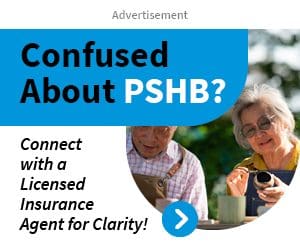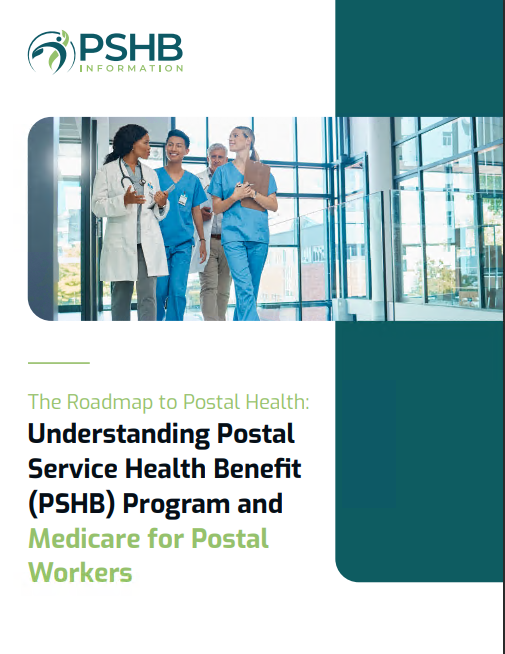Key Takeaways
-
In 2025, USPS retirees are officially transitioned out of the Federal Employees Health Benefits (FEHB) Program and into the Postal Service Health Benefits (PSHB) Program.
-
You must understand how PSHB integrates with Medicare, how coverage rules differ from FEHB, and what actions you may need to take moving forward.
You’re No Longer Covered by FEHB—Now What?
As of January 1, 2025, if you are a retired United States Postal Service (USPS) employee, your health benefits no longer fall under the Federal Employees Health Benefits (FEHB) Program. Instead, you are now part of the new Postal Service Health Benefits (PSHB) Program, created exclusively for USPS workers and retirees.
This marks a major change in how your healthcare coverage is structured. While many features remain familiar, there are important distinctions in eligibility, coordination with Medicare, prescription drug benefits, and enrollment procedures. If you were used to the way FEHB worked, now is the time to understand what the PSHB shift really means for you.
What Is the PSHB Program?
The PSHB Program is a new, separate health benefits program established under the Postal Service Reform Act of 2022. It replaces FEHB for USPS workers and retirees, starting in 2025. Although the PSHB Program is still administered by the U.S. Office of Personnel Management (OPM), it offers health plans exclusively for postal employees, annuitants, and their eligible family members.
Key PSHB Features:
-
Administered by OPM, but distinct from FEHB
-
Only available to current USPS employees, retirees, and eligible dependents
-
Designed to integrate with Medicare Part B for retirees 65 and older
-
Offers similar types of health plan choices as FEHB, but tailored for USPS
Enrollment Rules and Timeframes
Enrollment into PSHB isn’t automatic for everyone. Most retirees were transitioned during the Open Season that ran from November to December 2024. But there are a few timelines and requirements you should keep in mind in 2025:
If You’re Already Enrolled in FEHB (as of 2024):
-
You were automatically enrolled in a comparable PSHB plan for 2025, unless you made a different selection during Open Season.
If You Become Medicare-Eligible in 2025:
-
You must enroll in Medicare Part B to keep your full PSHB coverage, unless you qualify for an exception.
Open Season Timing:
-
Occurs annually in November and December.
-
Outside of Open Season, you can only change your plan if you experience a Qualifying Life Event (QLE).
How PSHB and Medicare Work Together
One of the biggest changes with PSHB is the requirement to enroll in Medicare Part B if you are eligible. This requirement did not exist under FEHB. The PSHB Program is designed to work hand-in-hand with Medicare to lower your total healthcare costs and reduce cost-sharing.
Medicare Enrollment Requirements:
You are required to enroll in Medicare Part B if:
-
You are a USPS annuitant (or family member) and
-
You are eligible for Medicare Part A and
-
You are not exempt based on specific criteria
Exemptions Apply If:
-
You retired on or before January 1, 2025, and were not enrolled in Medicare Part B
-
You were age 64 or older as of January 1, 2025
-
You live overseas
-
You receive health care through the Veterans Health Administration or Indian Health Services
Benefits of Having Both PSHB and Medicare:
-
Reduced or eliminated deductibles and copayments
-
Enhanced prescription drug coverage
-
Wider access to providers
-
Lower out-of-pocket costs overall
Prescription Drug Coverage: What’s New in 2025
Your PSHB plan automatically includes integrated Medicare Part D drug coverage if you are enrolled in Medicare. This is a big shift from how FEHB previously handled prescriptions for retirees.
Key Points About Prescription Benefits:
-
You receive your drug coverage through a Medicare Part D Employer Group Waiver Plan (EGWP)
-
The annual out-of-pocket cap for prescription drugs is now $2,000
-
A $35 monthly cap applies to covered insulin products
-
Broader access to in-network pharmacies is available
-
You can opt out of this Part D coverage, but that means you lose all drug coverage under PSHB for the year and may not be able to re-enroll until the next plan year
What Happens If You Don’t Enroll in Medicare Part B?
Failing to enroll in Medicare Part B, if required, could significantly limit your PSHB coverage. For example, some cost-sharing reductions only apply if you’re enrolled in both PSHB and Medicare.
Risks of Not Enrolling:
-
Higher copayments and deductibles
-
Limited coordination of benefits
-
In some cases, denial of certain cost-saving features
-
Ineligibility for the integrated prescription drug benefits
Coverage Options for Family Members
Just like FEHB, the PSHB Program allows you to cover eligible family members. However, rules vary slightly based on their Medicare status and your own eligibility.
Covered Family Members May Include:
-
Spouse
-
Children under age 26
-
Disabled adult children, if eligible
If a family member is Medicare-eligible, they are also required to enroll in Part B to retain full PSHB benefits—unless they meet exemption criteria.
What Stays the Same From FEHB?
While PSHB brings a number of changes, some aspects will feel familiar:
-
Plan options still include a range of coverage levels (Self Only, Self Plus One, Self and Family)
-
You continue to share premium costs with the government
-
Many of the same carriers continue to offer plans, but now under the PSHB umbrella
What’s Different Now?
Here’s how the PSHB Program differs from FEHB in practical terms:
-
Medicare Part B is mandatory for most Medicare-eligible annuitants
-
Drug coverage is built into your plan, not separate
-
Separate risk pool and premium structure for USPS retirees and employees
-
More integration between PSHB and Medicare
How to Make Changes or Ask for Help
You can make changes to your PSHB coverage during Open Season or due to a Qualifying Life Event. It’s important to review your plan every year, especially if your healthcare needs or eligibility status changes.
Resources for Support:
-
OPM Website
-
KeepingPosted.org (for retirees)
-
LiteBlue (for employees)
-
PSHB Navigator Help Line: 1-833-712-7742
If you are unsure about your Medicare status, PSHB eligibility, or exemption qualifications, it is highly recommended that you speak with a licensed agent for personal guidance.
What You Should Do Next
If you haven’t already taken the necessary steps, here’s what you should focus on in 2025:
-
Confirm your enrollment in a PSHB plan
-
Enroll in Medicare Part B if required
-
Verify that your dependents meet eligibility and Medicare requirements
-
Review your drug coverage to ensure you’re included in the integrated Part D plan
-
Check your plan details each Open Season to ensure your coverage still fits your needs
The Impact of This Change on Your Retirement Benefits
Your basic retirement annuity, Thrift Savings Plan (TSP), and Social Security benefits remain unchanged. However, the shift to PSHB could change your monthly health insurance premium, especially if you or your dependents are required to pay Medicare Part B premiums.
While the PSHB structure is designed to reduce your total healthcare spending over time, especially if you coordinate it properly with Medicare, the actual impact depends on your healthcare usage and plan selection.
Staying Informed and Prepared
This change is one of the most significant transitions in postal retirement history. It’s important that you stay informed each year as PSHB evolves. Premiums, cost-sharing features, and available plans may change annually.
Monitoring your mail, checking government websites, and working with a licensed agent are all essential steps to make sure your benefits are working for you—not against you.
Take Charge of Your PSHB Coverage
The transition from FEHB to PSHB is now complete, but your responsibility continues. You need to stay informed, enrolled, and compliant with Medicare rules. While the PSHB Program offers strong benefits, failure to understand the new requirements could cost you financially.
Speak with a licensed agent listed on this website if you need help understanding how to coordinate Medicare with PSHB or have questions about exemptions and eligibility.








